Keywords: mini excavator buckets, 1 ton mini excavator, 1.5 ton mini excavator
mini excavator buckets
1 ton mini excavator
1.5 ton mini excavator
Choosing the right equipment for a digging project can be a time-consuming task, especially since it’s so important to make the right choice. Even once you’ve decided on using an excavator, you still need to make sure you choose the right size. Pick one that’s too small or doesn’t have the right functionality and you won’t be able to get the job done properly. Choose one that’s too large and not only may it be the wrong fit for the job, but it could also push you over budget. So how do you decide what excavator size is right for you?
There are many different types of excavator, but they all fall into four main size categories: mini, midi, standard, and large. In order to pick the right excavator size, you need to know what your options are.
Explore All Excavators
Mini or Compact Excavator
<6 tons (13,227 lbs)
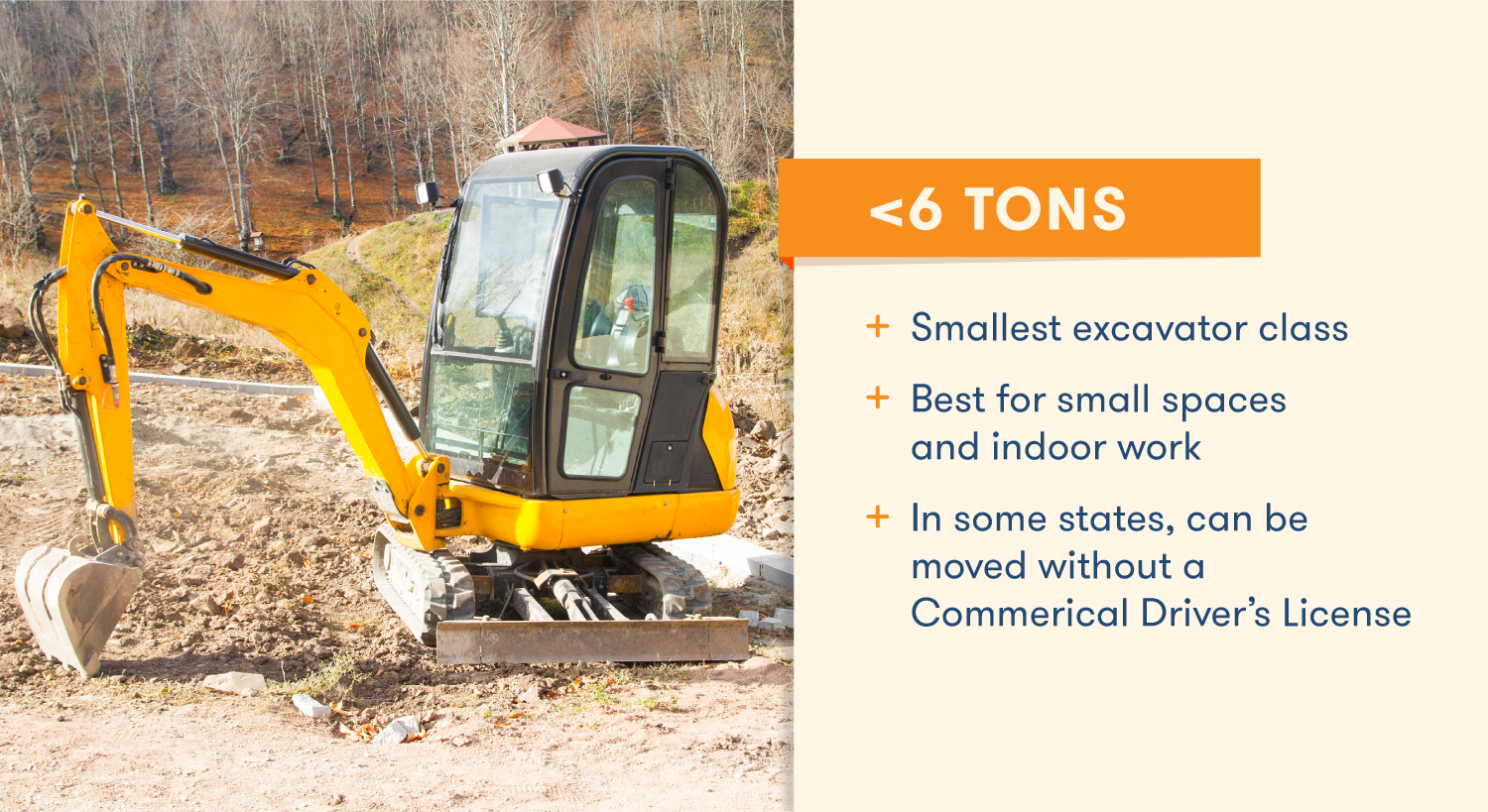
This is the smallest class of excavator and they are particularly useful for fitting into small spaces. Another benefit is that compact excavators are small enough to be hauled using Class 1 and 2 trucks, which in many states don’t require a Commercial Driver’s License (though it’s important to check with your local DMV first to make sure). This level of transportability makes them a favorite among people who are working in multiple locations.
Mini excavators are great for indoor projects, sewer repairs, water line installations, and other projects that don’t require the size and power of a larger machine.
Midi Excavator
6–10 tons
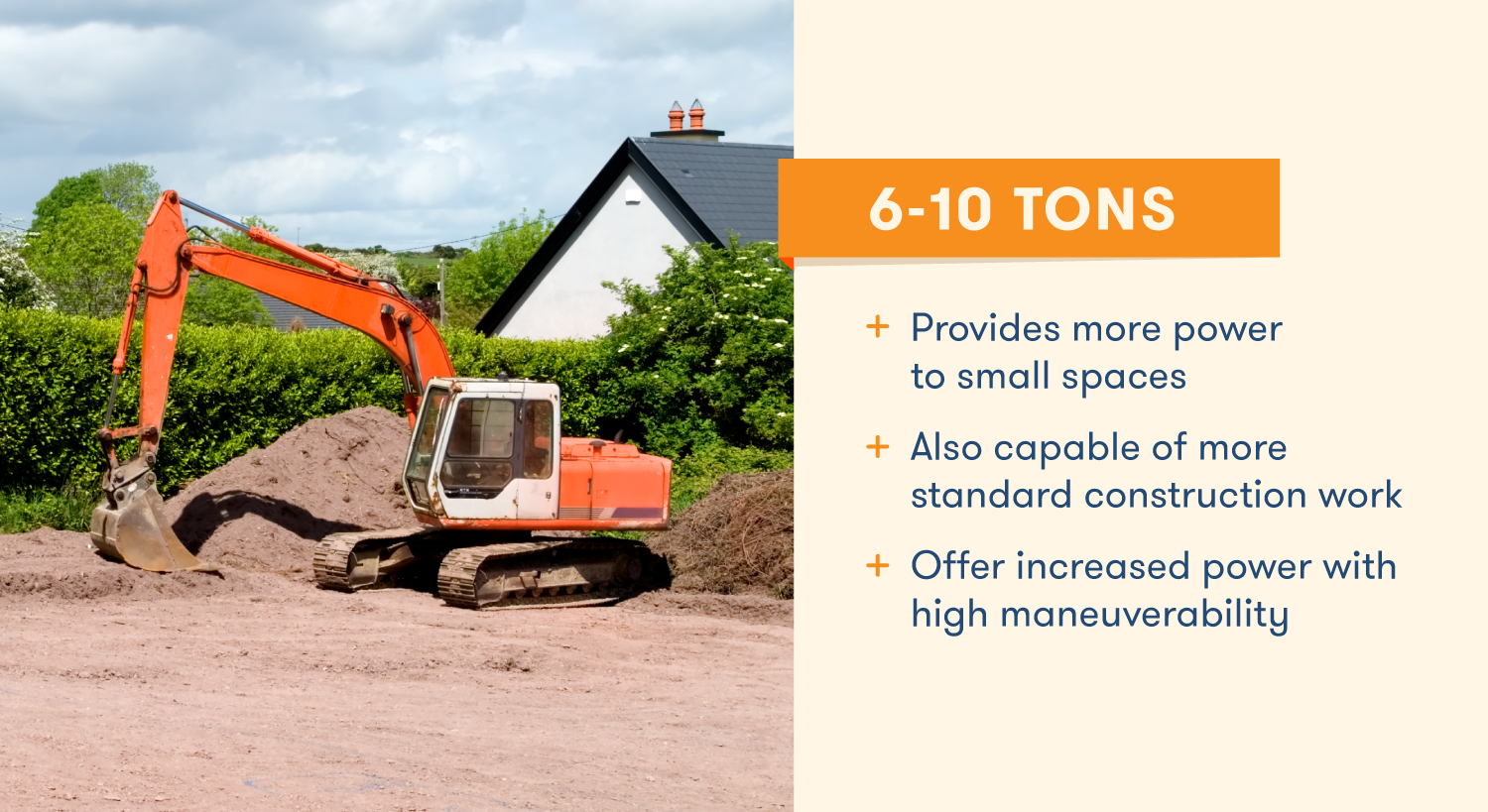
Midi or mid-sized excavators are a good choice for those who work in small spaces but need more reach and power than a mini excavator can provide. Midis can also be used on more standard projects like building construction and landscaping while still providing the advantage of increased maneuverability thanks to their smaller size.
Standard Excavator
10–45 tons
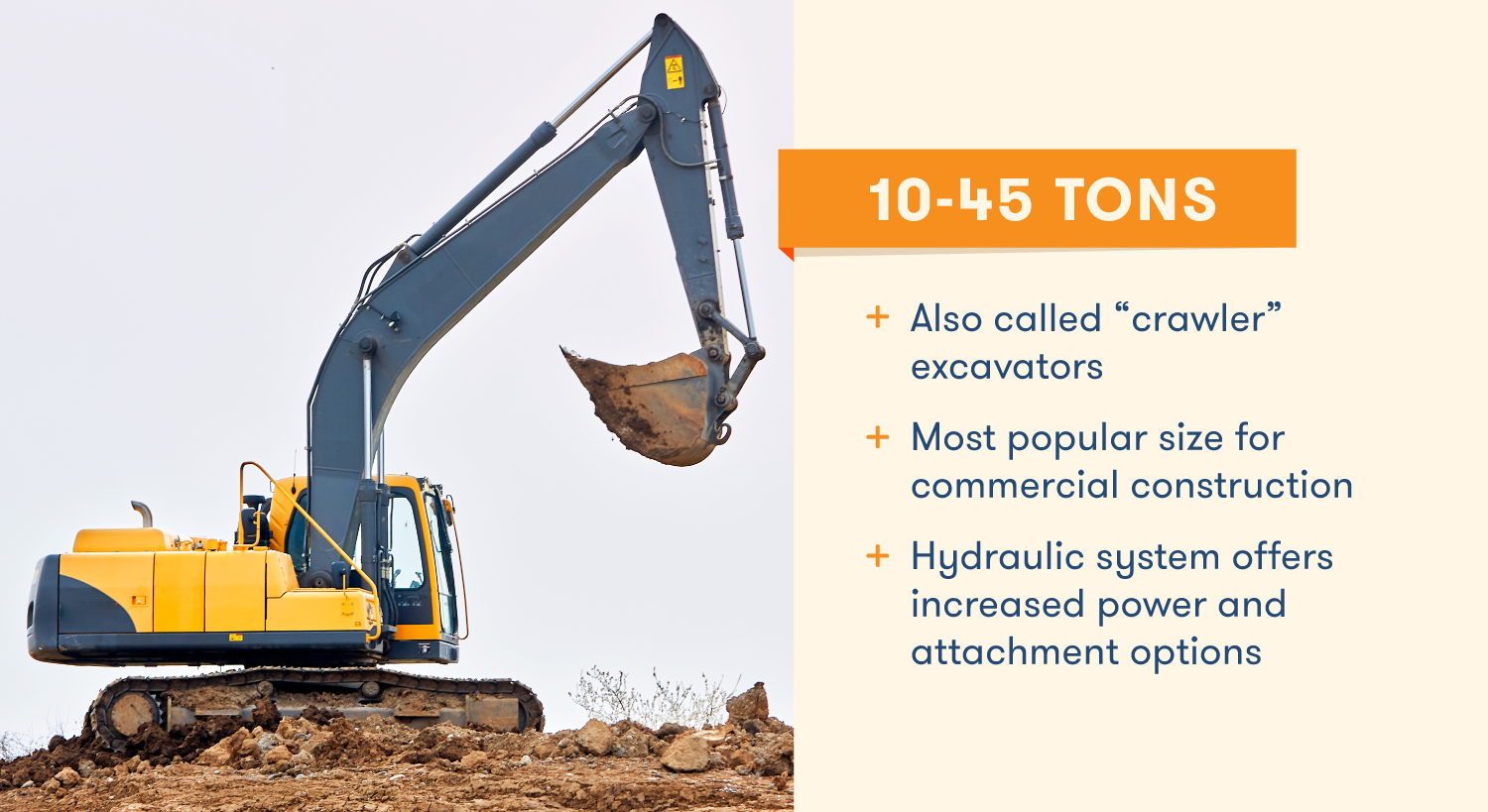
Standard or full-sized excavators, sometimes called “crawler” excavators, make up the largest volume of excavators on the market. The most popular crawlers fall in the 19–24 ton range, and this class is most common in commercial construction. Standard excavators not only offer more power and reach, but their hydraulic systems make them capable of handling multiple tool attachments.
Large Excavator
45 tons
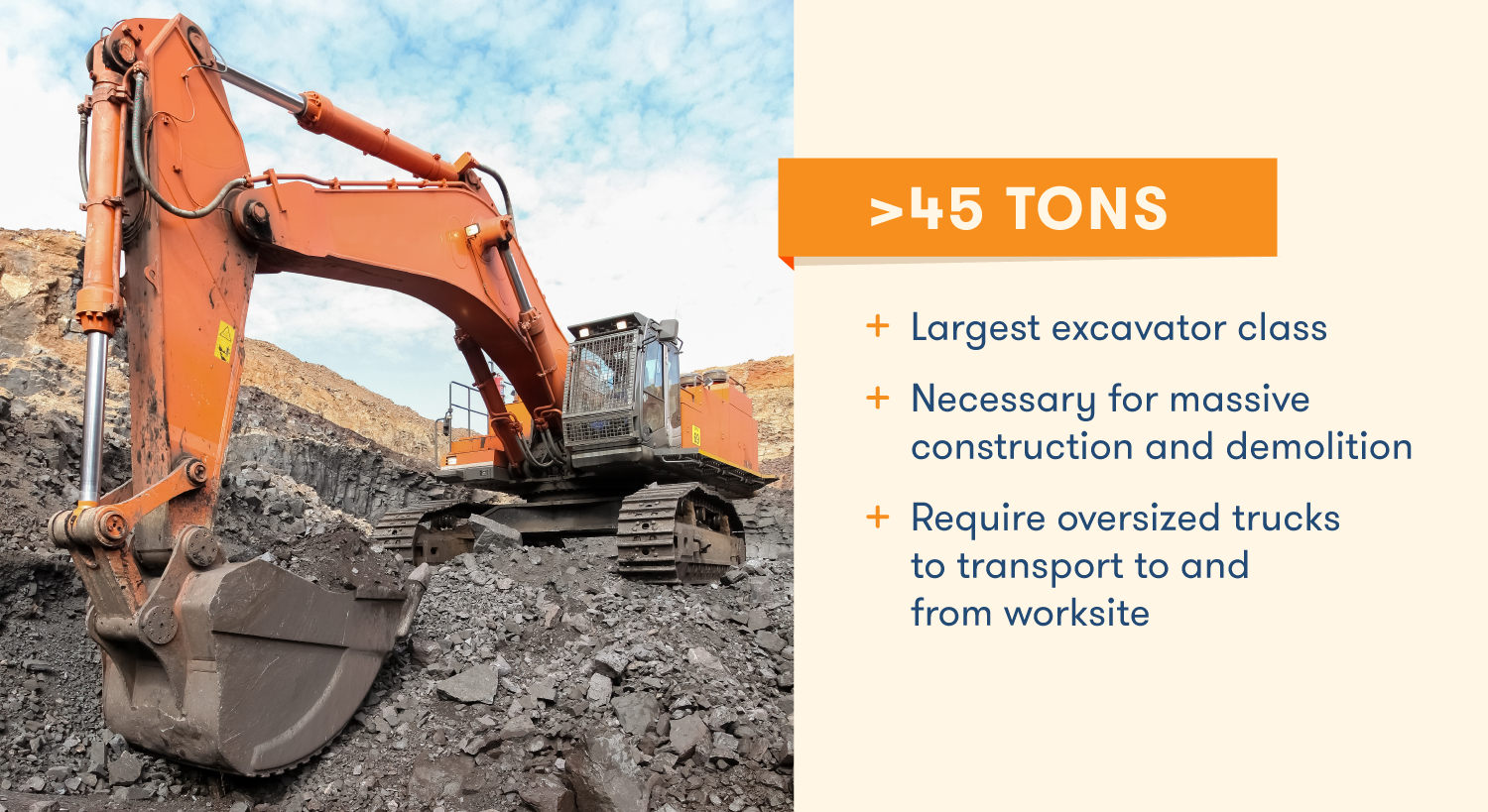
The largest class of excavators is useful for major construction and demolition projects that require the maximum of power and capacity. Though large excavators are unsurpassed for power, their size comes with major drawbacks — they require oversized trucks and trailers to move and are unwieldy when it comes time to store them.
So Which Excavator Size Is Right For You?
The best way to pick an excavator size is to evaluate your project’s needs in a variety of key categories. Here are the main things to consider when choosing an excavator:
Digging Depth
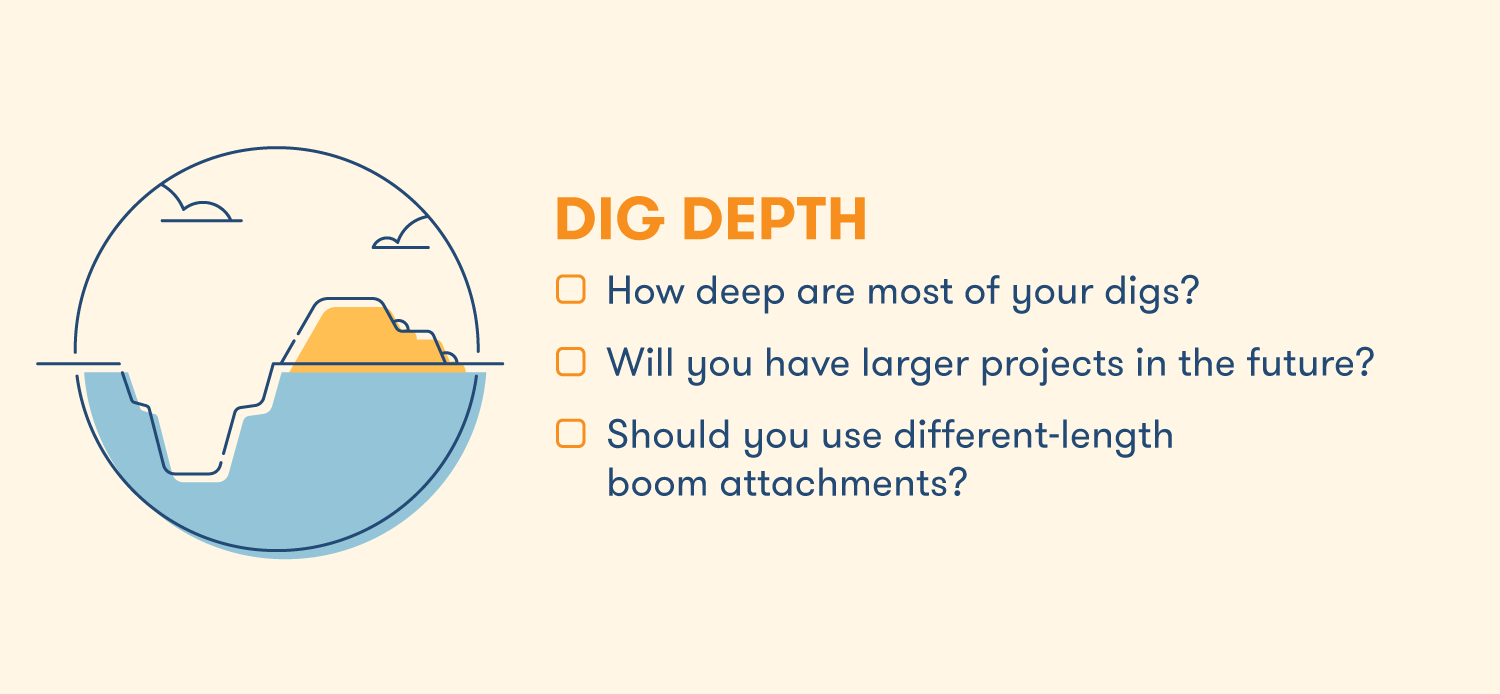
It’s important to ensure the excavator you choose has the reach required to meet the depth of your project. If most of your projects fall into one depth category and you only occasionally have projects that require more reach, it may be worth purchasing the machine you use most and then renting a larger piece of equipment on a case-by-case basis.
Lifting Capacity
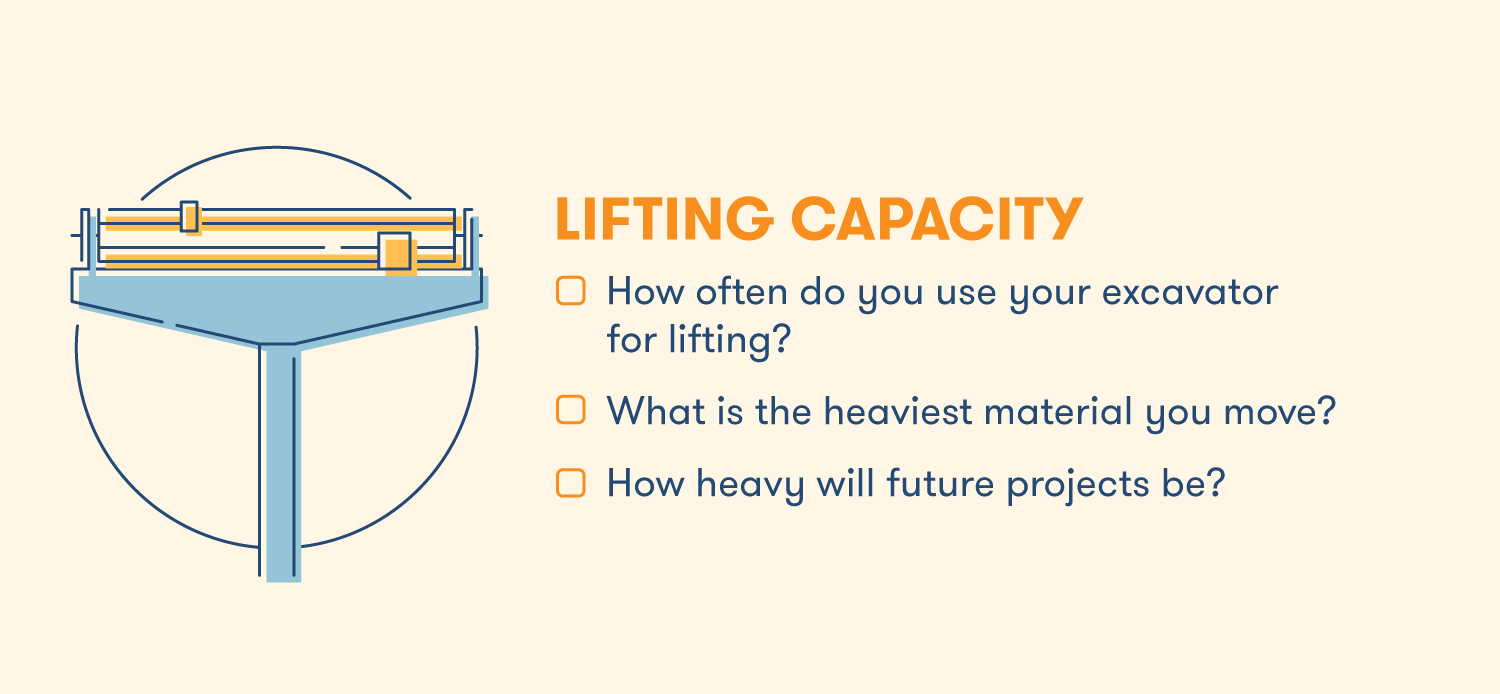
Larger excavators are capable of lifting bigger and heavier materials. For the heaviest lifts, standard and large excavators are powered by hydraulics.
Budget
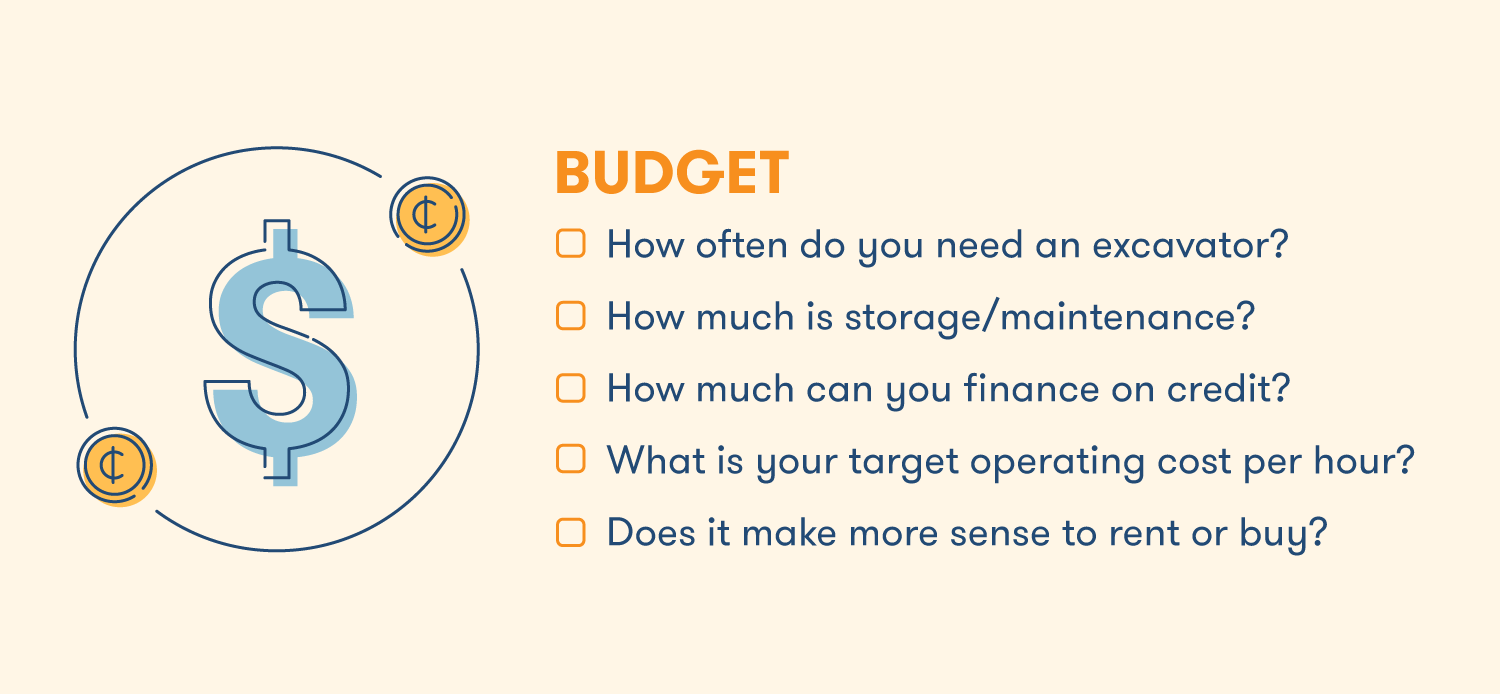
Larger excavators are more expensive, but choosing a piece of equipment that’s too small can be a costly mistake if you’re not able to complete your digs adequately. If you only use digging equipment sporadically, you may want to rent instead of buying an excavator to avoid maintenance and storage expenses.
Worksite Conditions
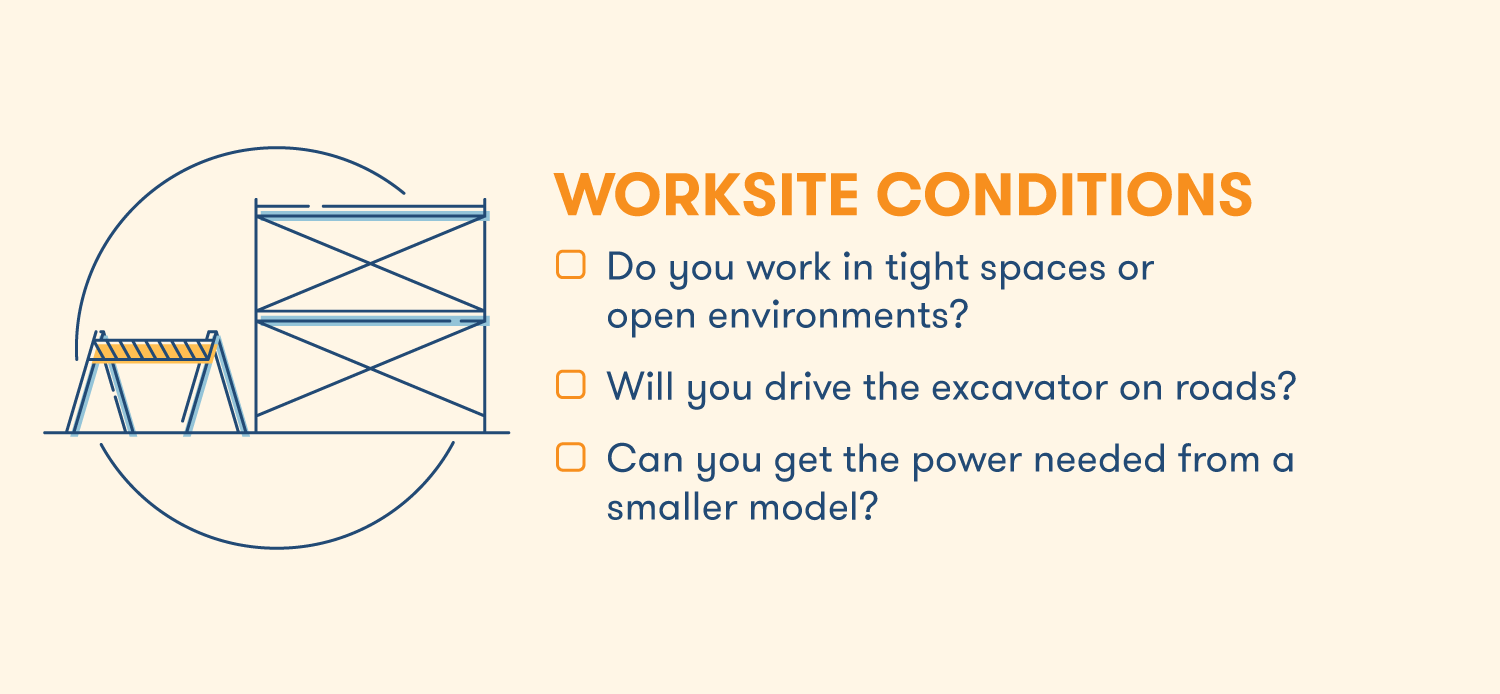
Consider how tight the space around your worksite is. Are there permanent fixtures like fountains or sidewalks nearby? Is your worksite large or do you need to dig in multiple locations? If you require the power of a large excavator, do you have the capacity to store and transport it?
Counterweight Options

Lifting capacity has to do with more than just power — the excavator also needs adequate counterweight to anchor it against the strain of the lift. Make sure the machine you choose has a counterweight that matches the weight of your lift requirements.
Bucket Capacity
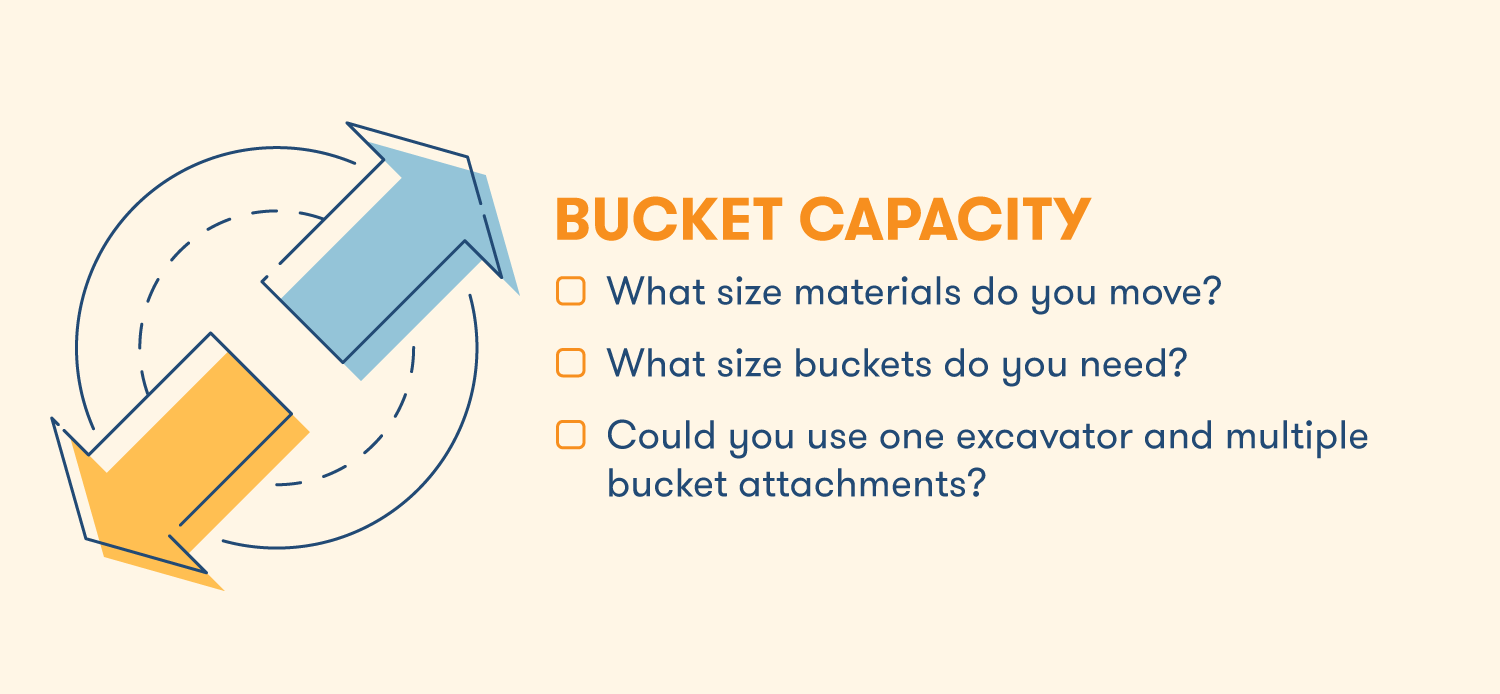
Excavator sizes are primarily determined by the overall size of the machine, but it’s also essential that the objects you lift fit in the excavator bucket.
Hydraulic Attachments
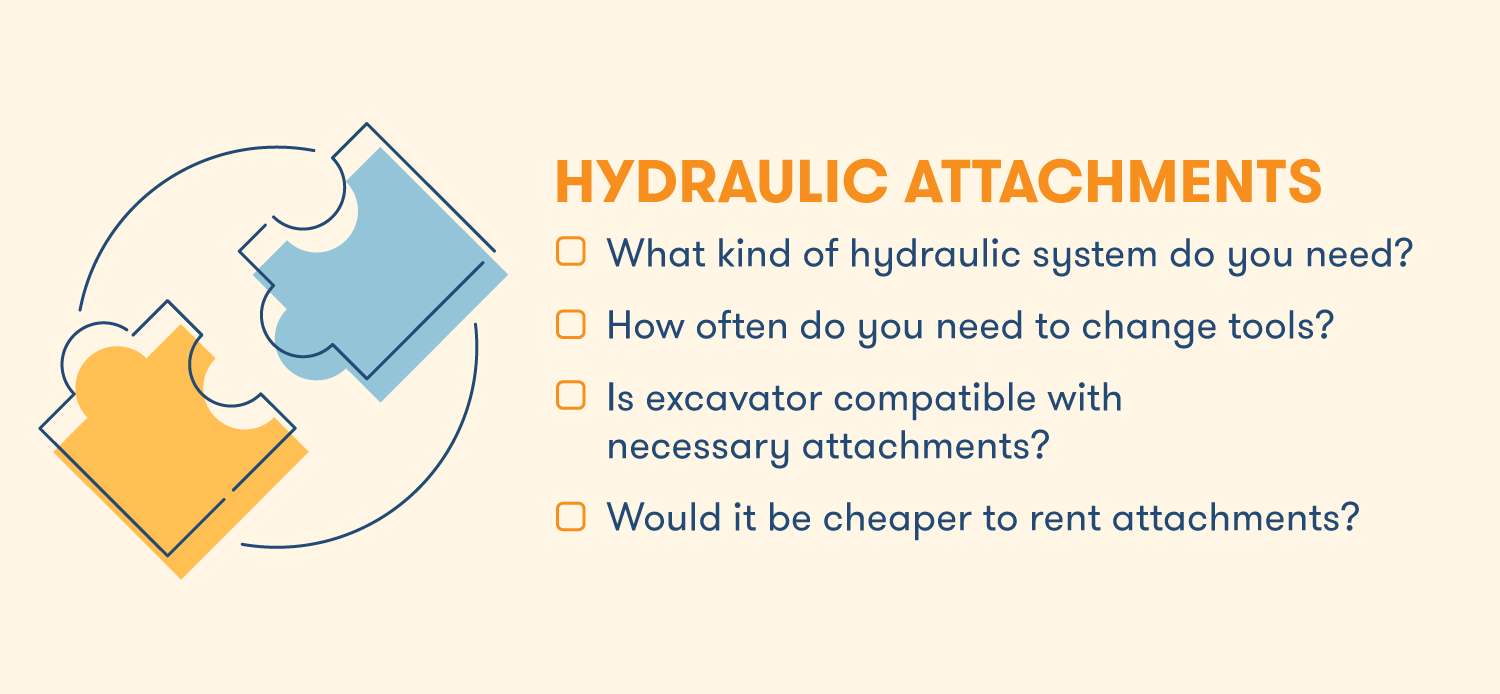
For heavier projects or projects that require multiple tool attachments, an excavator with a hydraulic system may be a better fit. What tools do your projects require? Ensure that the excavator you pick is compatible with the correct attachments.

Considering a Backhoe Instead
Remember that there are plenty of other options besides excavators for digging projects, and in some cases it might make more sense to work with a backhoe instead. Backhoes are similar to excavators but are often smaller and more maneuverable. They also have an extended range of attachments, so if your project requires versatility, a backhoe might be the more logical choice.
Test It Out
While evaluating these factors can help you get a reasonably accurate understanding of your project’s needs, the best way to ensure you’re choosing the right machine is to work with a professional in person. Different excavators also have different size and style cabs so the only way to truly get an idea of what size you prefer is to try it out yourself. While considering your options, give your rental associate a call and see if you can test the equipment on their lot.
Explore All Excavators